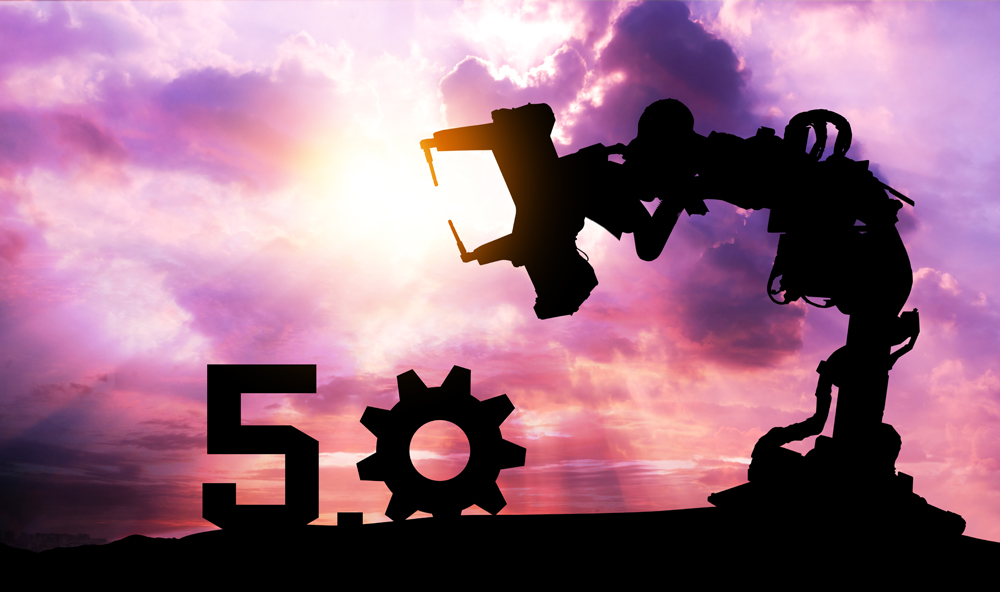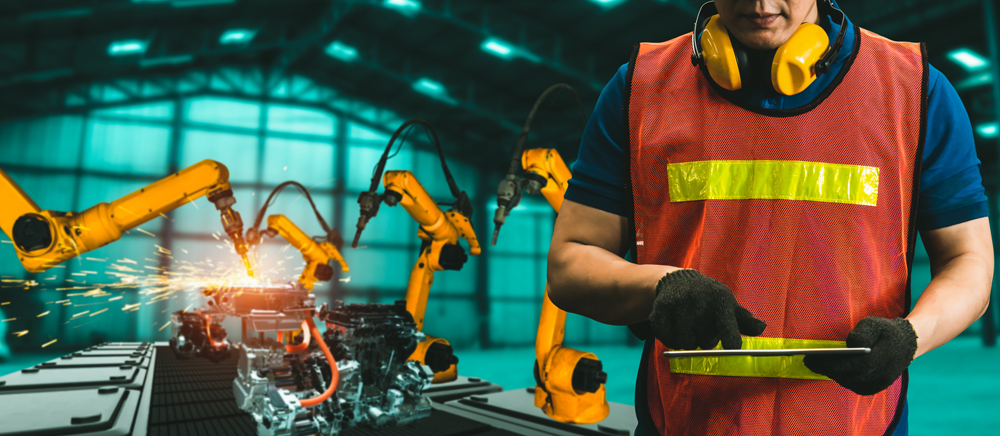Leading Manufacturing Modernization

Industrial robots are the future of Indian manufacturing, where factories will have zero labor fatigue, zero accidents, and improved quality and productivity with the help of an efficient synchronization between man and machine.
Robots have revolutionized the way people used to look at their processes. In the 20th century, robots were big machines with automation. Now they are being used in varied applications in sectors ranging from Healthcare to Outer Space. Industrial robot technology is gaining momentum like never before and has evolved to new concepts of man and machine co-existence.
For achieving maximum efficiency, safety, and competitive advantage in the market, robot-driven automated manufacturing is becoming a norm. These industrial robots help in doing hazardous and repetitive tasks which ensures that the manpower on shopfloors is safe and can operate and synchronize with machines, thereby delivering precise, consistent, and efficient output.
Robots and applications
There are numerous ways in which a robot can be used for industrialization purposes. Categorized differently according to industries and applications, these robots vary in volume, process, accuracy, and flexibility. They have real solutions to help people with more complex tasks like welding, painting, lifting, moving heavy items, and high-precision pick-and-place applications. The first phase of this revolution brought electric machines that performed repetitive tasks without fatigue. These robots were used in the Automobile industry and other similar applications. The second phase brought industrial robots that besides performing basic tasks also absorbed data to evolve and become better.
Busting myths
There are a lot of myths revolving around industrial robots. One among them is that with the penetration of robots in industries, humans will tend to lose their jobs. People need to understand the fact that they can never become completely redundant as these robots may be highly efficient but are still limited in numerous ways. While these machines are getting smarter, manpower is still needed to work around them to operate, monitor, and synchronize many processes. We humans need to spend more productive time in planning and doing smart work, while the robots can continue to work on repetitive and fatigue jobs.
Cobots are workspace partners
Nowadays, with the technology getting upgraded day by day, we have a new industrial robot, a game-changer in this space - Collaborative Robot, popularly known as ‘Cobot’. Simpler, easier, and flexible to use, Cobots are designed to be workspace partners. They are safe, require minimal or no programming, and allow hassle-free connectivity which makes them an excellent option for a wide range of applications.
Collaborative robots like MELFA ASSISTA have a wide range of uses including handling components, doing assembly jobs offering a variety of finishes, applying sealant or glue, and a lot more. They are used in load building (at a production line’s end where they assemble a pallet load of products), quality control (inspecting and testing procedure involving deployment of robots for repetitive work), transportation (load pallets before shipping), and warehousing (for carrying out the removal of received products from pallets and then routing them to a facility’s storage location). In addition to this, they are also widely used in Food and Pharma industries for handling pick-and-place jobs.
MELFA FR series industrial robots come with a Robot control, which is a combination of all the technologies required to control an industrial robot’s electromechanical system. A Programmable Automation Controller (PAC), Programmable Logic Controller (PLC), Embedded Controller, PC, Industrial PC (IPC), or Motion Controller can be used for robot control. The industrial robot allows various benefits including gentle product handling, accuracy, quiet operation, improved efficiency, and flexibility.
Simpler, easier, and flexible to use, Collaborative Robots or Cobots are designed to be workspace partners.
They are safe, require minimal or no programming, and allow hassle-free connectivity which
makes them an excellent option for a wide range of applications.
Easy to train
Some robots may need programming while others do not require any programming at all. For instance, MELFA ASSISTA can be programmed using a tablet with simple point teaching. One just needs to teach the moving points to ASSISTA and consider the work done. The user can simulate the movement before actually transferring it to the Cobot for confirmations. Alternately, he can hand guide ASSISTA to the points and can directly teach with a teaching panel available on the Cobot arm, eliminating the need for any complex programming and software.

Industrial robots are the future of Indian manufacturing, where factories will have zero labor fatigue, zero accidents, and improved quality and productivity with the help of an efficient synchronization between man and machine. If used correctly with complete shop-floor data integration, this technology can put India on the world map of manufacturing and establish India as a manufacturing hub for the world.

ATUL PATIL
Asst. General Manager
Marketing Department
Factory Automation & Industrial Division
Mitsubishi Electric India
Source: Magic Wand Media





 Facebook
Facebook Twitter
Twitter Linkedin
Linkedin Subscribe
Subscribe